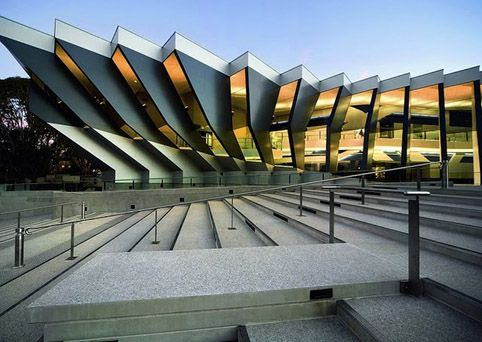Architecture is more than just creating beautiful buildings—it’s about designing functional, sustainable, and people-centered spaces that shape how we live, work, and interact. Understanding the core building design principles helps architects and designers create environments that are both purposeful and inspiring.
In this article, we’ll explore the fundamental principles of building design and how thoughtful architecture influences our daily lives and surroundings.
🧱 What Are Building Design Principles?

Building design principles are the foundational guidelines that inform how structures are planned, constructed, and experienced. These principles ensure that a building is:
-
Safe and structurally sound
-
Aesthetically pleasing
-
Functionally effective
-
Environmentally responsible
-
Culturally and socially relevant
Whether designing a home, office, school, or public space, these principles help architects balance creativity with practicality.
🧠 The Core Principles of Building Design
Here are the key design principles that drive exceptional architecture:
✅ 1. Functionality and Purpose
Every building should serve its intended function efficiently. Form should follow function, meaning:
-
A school should support learning and safety.
-
An office should enhance productivity and flexibility.
-
A home should promote comfort, privacy, and connection.
Designing with purpose ensures the space meets user needs effectively.
✅ 2. Sustainability and Environmental Impact
Green architecture minimizes environmental impact through:
-
Energy efficiency (e.g., insulation, natural lighting, renewable energy)
-
Eco-friendly materials (e.g., recycled, non-toxic, locally sourced)
-
Water conservation (e.g., low-flow fixtures, rainwater harvesting)
-
Sustainable site planning (e.g., orientation, landscaping)
Sustainable buildings help combat climate change and reduce long-term costs.
✅ 3. Aesthetics and Visual Appeal
While function is key, aesthetic quality enhances how people feel and connect with a space.
-
Proportion, scale, symmetry, and rhythm create visual harmony.
-
Materials, textures, and colors express mood and character.
-
Architectural style reflects culture, history, and innovation.
A beautiful building becomes a source of identity, pride, and inspiration.
✅ 4. Structural Integrity and Safety
A well-designed building must be safe, durable, and compliant with local building codes.
-
Load-bearing elements must be correctly engineered.
-
Materials must withstand environmental conditions.
-
Fire safety, accessibility, and emergency exits are essential.
Safety ensures both comfort and confidence in the built environment.
✅ 5. Adaptability and Flexibility
Modern buildings must evolve with changing needs.
-
Modular designs and open layouts allow for future reconfigurations.
-
Mixed-use developments support community and economic sustainability.
-
Smart buildings integrate technology for comfort and efficiency.
Designing for adaptability increases a building’s relevance and lifespan.
✅ 6. Context and Site Sensitivity
Architecture should respond to its surroundings, including:
-
Climate and topography
-
Cultural and historical context
-
Urban or rural environments
-
Views, light, and access
A building that fits its site enhances its environment rather than disrupts it.
✅ 7. User Experience and Accessibility
Great architecture considers how people interact with a space:
-
Is the space intuitive and easy to navigate?
-
Are entrances, exits, and transitions smooth and accessible?
-
Does it support wellness, comfort, and inclusion?
Universal design ensures everyone, regardless of ability, can use the space.
🏙️ How Building Design Affects Our Lives
Thoughtfully designed buildings:
-
Boost mental and physical health
-
Enhance productivity and learning
-
Foster social interaction and community
-
Reduce environmental impact
-
Shape cultural and urban identity
From cozy homes to public landmarks, architecture plays a silent but powerful role in our everyday experiences.
🧾 Real-World Examples of Great Design Principles
-
Fallingwater (USA) – Integrates architecture with nature
-
The Shard (UK) – Emphasizes vertical space and urban regeneration
-
The Edge (Netherlands) – A smart, energy-positive office
-
Barcelona Pavilion (Spain) – Simplicity, form, and material mastery
-
Green School (Bali) – A sustainable, bamboo-based learning environment
These buildings showcase how form, function, and innovation can co-exist.
🏗️ Tips for Applying Building Design Principles
If you’re designing or renovating a space:
-
Start with clear goals: What is the space for?
-
Work with professionals who value sustainable and inclusive design.
-
Prioritize natural light, ventilation, and space flow.
-
Consider how the building will age and adapt over time.
-
Balance budget with long-term functionality and value.
🏁 Conclusion: Designing for People, Planet, and Purpose
Building design principles serve as the blueprint for creating spaces that are not only visually stunning but also deeply functional, safe, and sustainable. Whether you’re an architect, student, or someone passionate about great spaces, understanding these principles helps you appreciate how architecture shapes the world around us.
🏛️ Because good buildings don’t just shelter us—they inspire, connect, and sustain us.

